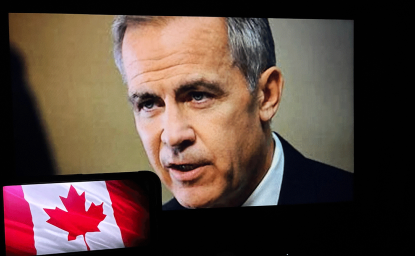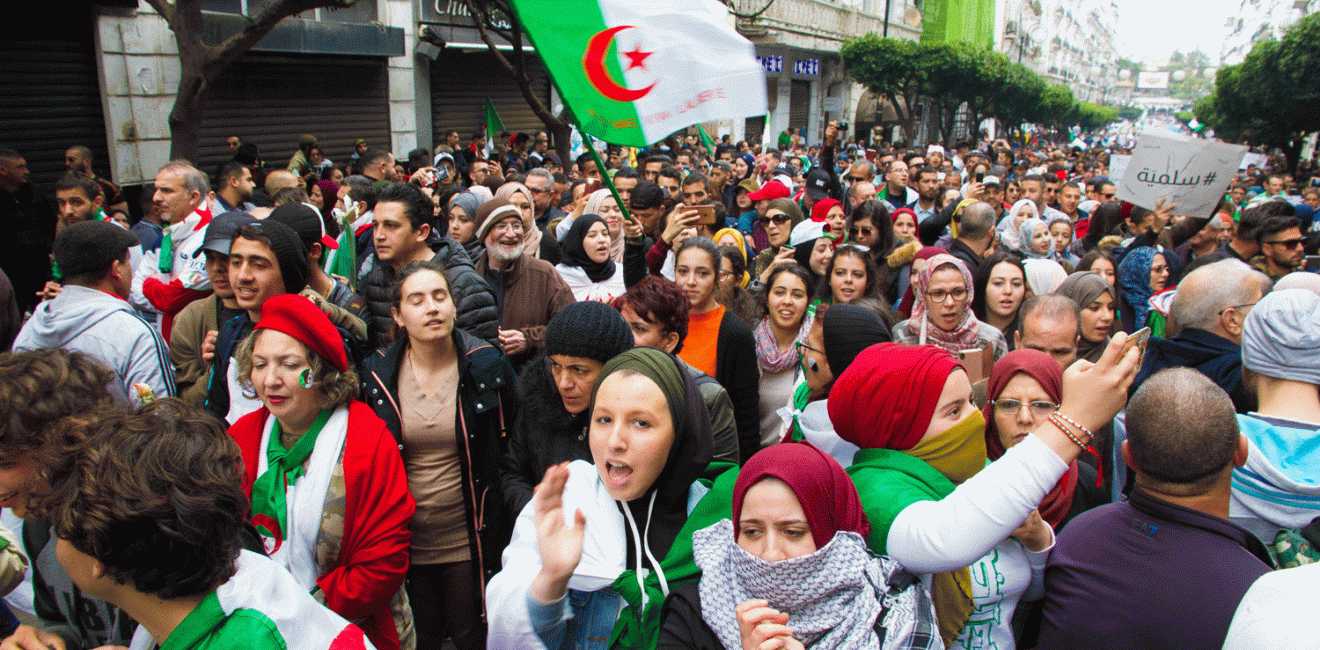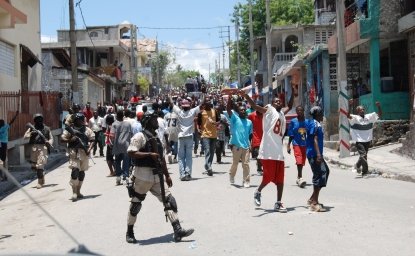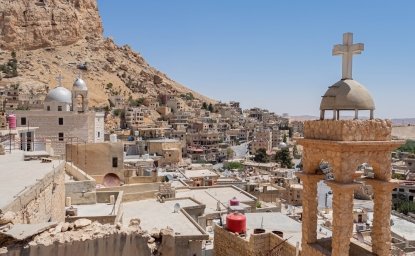One year after crowds took to the streets on February 16, 2019, the protest movement – or Hirak – in Algeria has scored modest victories and suffered important defeats, but it remains defiant and determined. It also remains peaceful – a truly remarkable development in a country that experienced much violence during the war for independence from France (1954-1962) and during the civil war from 1991 to 2002, in which both civilians and the military perpetrated atrocious crimes. Most importantly, the movement does not appear ready to desist. Having routinized demonstrations to regular events on Tuesdays and Fridays, the Hirak appears determined to continue its protest indefinitely. However, it has no clear path to realizing its aspiration to overthrow the political class that has ruled the country for decades and to force the long overdue generational transfer of power. It has avoided defeat, but it is not likely to achieve victory, either.
... the Hirak appears determined to continue its protest indefinitely. However, it has no clear path to realizing its aspiration to overthrow the political class... and to force the long overdue generational transfer of power.
The protest was triggered by the announcement in early February that President Abdulaziz Bouteflika — wheelchair-bound and rarely seen in public – intended to run for a fifth term. The old political establishment, whose claim to legitimacy was largely rooted in its members’ participation in the war for independence, still felt it needed Bouteflika as a figurehead. He was a participant in that war, a fixture in post-independence governments, and he had engineered a settlement to the crisis of the 1990s by sweeping crimes committed by all sides under the rug, choosing amnesty over accountability.
After weeks of resisting, the president resigned on April 2 at the insistence of the military, for whom the old ally had become a burden. His resignation was followed by a wave of arrests of former officials and businessmen who were considered particularly corrupt, among them the president’s brother Said Bouteflika. The Hirak saw the arrests as purely cosmetic, an effort to convince protesters that the old military-backed regime was being dismantled. In reality, the military was more in control than ever: General Ahmed Gaid Salah, a 79-year old veteran of the war for independence and a close ally of Bouteflika, who had appointed him army chief of staff, emerged as the most powerful figure in the transition. He hardly represented the new generation of leaders and the new political system the Hirak demanded. The protesters rejected Salah’s plan to hold new presidential elections on July 4, believing that reforms were needed beforehand in order for elections to be credible. Elections were postponed from July 4 to December 12, but only because the regime itself needed more time to organize. The Hirak demanded a further delay so it too could prepare, but it was simply ignored.
On December 12, the protesters worst fears were realized. All presidential candidates were old-time politicians that had been vetted by the authorities, and none represented the Hirak. Many Algerians boycotted the elections; officials estimated the turnout at 40 percent, the lowest ever, but independent observers believed it was much lower. The winner was 74-year old Abdelmadjid Tebboune, a veteran politician who had served in many cabinets, including as prime minister. A few days later, Tebboune named as prime minister another old regime insider, Abdelaziz Djerad. Furthermore, the cabinet announced on January 2 included many members of the interim government as well as former ministers under Bouteflika. Nor was there change in the military: although General Salah died suddenly of a heart attack on December 23, his successor, General Said Changriha, was another aging hardliner.
The current political situation in Algeria thus presents a discouraging picture from the point of view of the Hirak—or of anybody who believes that the country is caught in a time warp in the hands of a political class shaped by the war of independence against France, disconnected from the needs of a modernizing new Algeria. The movement has scored a few successes, but the overall picture is bleak.
Protesters managed to stop Bouteflika’s absurd candidacy – though men barely younger than himself now rule the country and the military’s political role is as strong as ever. The Hirak also made protest sustainable over the long run and kept it peaceful. In avoiding violence, it was helped by the regime that was equally afraid of opening a new Pandora’s Box of uncontrolled bloodshed. While protesters have been arrested at times, there has been no attempt to break up demonstrations with force and both the new president and prime minister even speak with respect about the Hirak, extolling the values it embodies.
Protesters managed to stop Bouteflika’s absurd candidacy – though men barely younger than himself now rule the country and the military’s political role is as strong as ever.
But the protesters have also lost the biggest and more important battle: after a year in the streets, the Hirak remains a protest movement and has not succeeded in becoming a participant in the reform process it demands. Tabboune and Djerad are promising Algerians a new constitution, rule of law, and economic revival, all promises they have heard in the past — even Djerad admits that he needs to regain the confidence of the Algerian people. This will be difficult to accomplish because the Hirak has no place at the table where reforms are being discussed. It is clear that whatever steps the government decides to carry out, they will be designed and implemented without the participation of new political forces.
The failure of the Hirak to gain a say in the process is the result not only of the old guard’s determination to maintain power, but also of the weakness of the movement itself. Like protesters in many Arab countries, Algerians who took to the streets did not believe in creating a strong organization. There were no Leninists in their rank convinced of the value of a hierarchical, tightly controlled organization. Rather, they relied on mass participation and spontaneous action. They were clever in coordinating their protests to make them sustainable—working people could protest on Fridays while going to their jobs the rest of the week, and students could protest on Tuesdays while still attending classes and taking exams. By contrast, in Egypt the massive protests that took place in January 2011 and again in June 2013 could only be sustained for a few days before the pressure of daily life caused most people to drop out. In Algeria, the Hirak has now marked the fifty-second week of protest and participation remains high.
The failure of the Hirak to gain a say in the process is the result not only of the old guard’s determination to maintain power, but also of the weakness of the movement itself.
But even sustained protest does not ensure a role in shaping the transition. That requires leadership, organizations, and coalition building. The two Arab transitions where civilian protesters were most successful at carving out a determinant role for themselves were the one in Tunisia after 2011 and the current one in Sudan. In Tunisia, street protests eventually led to the formation of the Quartet of civil society organizations—the labor unions confederation, the employers’ association, the lawyers’ syndicate, and the human rights league—that succeeded in imposing a road map for change on the bickering political parties. Similarly, in Sudan, well-established professional associations and recently formed civil society organizations managed to coalesce and negotiate a transition plan with the military officers who had overthrown President Omar al-Bashir and seized power. The two sides agreed to a three-year transition process that will hopefully give time for new parties to organize before elections are held and full civilian government is restored.
Algerian protesters have shown at different times that they were aware of the experience of more successful protest movements in other countries. They sought, and occasionally succeeded, in enlisting to their cause professional associations—those representing lawyers and judges in particular. They tried to find credible, well-respected figures to speak for them, but in the end, nothing came of these efforts. The Hirak remained essentially faceless, without credible representatives to engage with the regime.
The future of the Hirak and the possibility of a transition to a truly new regime in Algeria remain uncertain. As things stand now, the movement has not been defeated. It is still defiant, but it remains a protest movement rather than an agent for change. One year later, Algeria is at a stalemate.
Author
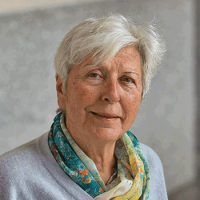
Former Senior Research Associate and Head of the Middle East Program, Carnegie Endowment for International Peace

Middle East Program
The Wilson Center’s Middle East Program serves as a crucial resource for the policymaking community and beyond, providing analyses and research that helps inform US foreign policymaking, stimulates public debate, and expands knowledge about issues in the wider Middle East and North Africa (MENA) region. Read more

Explore More
Browse Insights & Analysis
MENA360°
